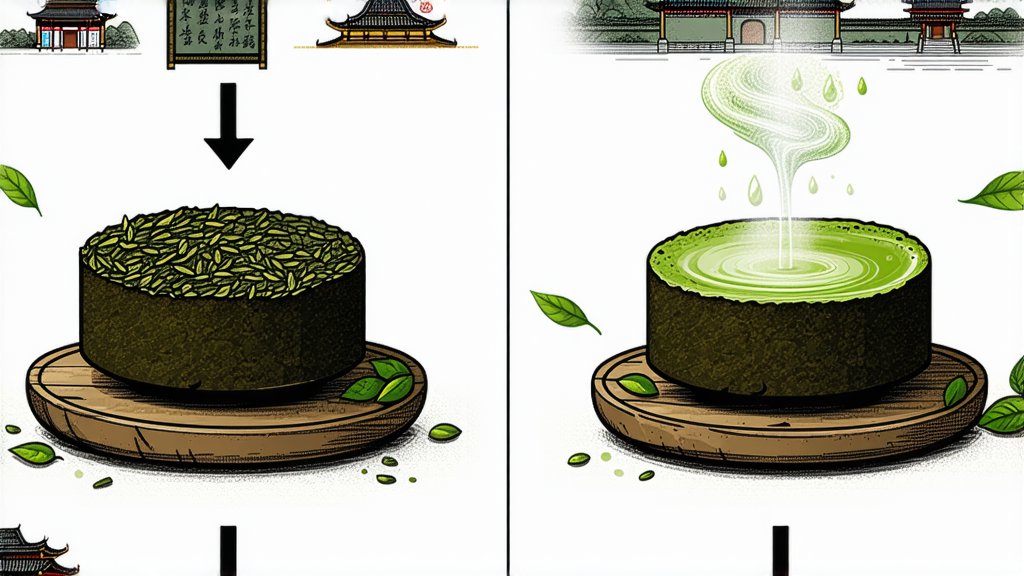
Pu-erh tea, a unique gem within the vast expanse of Chinese tea culture, stands as a testament to the country's deep-rooted tradition of tea cultivation and processing. This dark tea variety, originating from the Yunnan province, has captivated tea enthusiasts worldwide with its complex flavors, health benefits, and the intriguing aging process that transforms it over time. In this exploration, we delve into the historical roots, diverse varieties, meticulous production methods, and the artful appreciation of Pu-erh tea.
A Glimpse into History
The story of Pu-erh tea dates back to the Tang Dynasty (618-907 AD), with its name derived from the market town of Pu'er in Yunnan. However, it was during the Ming Dynasty (1368-1644) that Pu-erh gained prominence as a trade commodity along the ancient Tea Horse Road, which connected Yunnan with Tibet and other regions. This route not only facilitated the exchange of goods but also fostered cultural interactions, contributing to the spread and popularity of Pu-erh tea across Asia.
Varieties of Pu-erh Tea
Pu-erh tea is broadly categorized into two main types based on processing methods: Raw Pu-erh (Sheng) and Ripe Pu-erh (Shou).
-
Raw Pu-erh (Sheng): Made from sun-dried green tea leaves, Sheng pu-erh undergoes natural fermentation over years or even decades. This slow maturation process allows the tea to develop a wide range of flavors, from fresh and astringent when young to mellow and complex with age.
-
Ripe Pu-erh (Shou): In contrast, Shou pu-erh undergoes a accelerated fermentation process known as "wo dui" or pile fermentation. This involves piling the茶叶leaves into large mounds where controlled humidity and temperature expedite the aging process, resulting in a smoother, earthier taste that can be enjoyed sooner than its Sheng counterpart.
Both varieties can be found in various forms, including loose leaves, bricks, cakes, and tuocha (mini compressed tea cakes), each offering a distinct aging potential and sensory experience.
The Art of Production
The journey of Pu-erh tea from leaf to cup is an intricate dance between nature and human craftsmanship. Here's a closer look at the key steps involved:
-
Harvesting: Only the tender top leaves and buds are handpicked during specific seasons to ensure optimal quality.
-
Withering: Freshly picked leaves are spread out to wilt under the sun, reducing moisture content and preparing them for further processing.
-
Fixation: For Raw Pu-erh, the leaves are briefly stir-fried or steamed to halt oxidation, preserving their green hue and fresh character.
-
Rolling & Shaping: The softened leaves are rolled into tight spirals or pressed into molds to form compressed shapes like cakes or bricks.
-
Drying: The shaped tea is dried slowly to remove any remaining moisture, setting the stage for fermentation.
-
Fermentation: As mentioned earlier, Sheng pu-erh ages naturally over time, while Shou pu-erh undergoes controlled fermentation in specialized warehouses.
-
Aging: Proper storage conditions, including temperature, humidity, and ventilation, play a crucial role in the development of Pu-erh's unique flavors and aromas during the aging process.
Appreciating Pu-erh Tea
To truly savor the depths of Pu-erh tea, one must engage in a ritualistic approach to brewing and tasting:
-
Preparation: Use a Yixing clay teapot or a Gaiwan for optimal flavor extraction. Rinse the leaves briefly with hot water to awaken their aroma.
-
Infusion: Steep the tea in water heated to around 95-100°C (203-212°F). Start with shorter steeping times (about 5-10 seconds) and gradually increase as subsequent infusions reveal different layers of flavor.
-
Observation: Admire the tea liquor's color, clarity, and viscosity, which can vary from bright amber for young Sheng to deep red-brown for aged Shou.
-
Aroma: Inhale deeply to detect the tea's evolving fragrance, which might include notes of earth, damp wood, dried fruits, or even hints of floral and spice as it ages.
-
Tasting: Sip slowly, allowing the tea to coat your palate fully. Notice the initial astringency or sweetness, followed by mid-palate flavors, and finally the lingering aftertaste that signifies the tea's quality and age.
-
Multiple Infusions: Pu-erh tea is renowned for its ability to be re-steeped multiple times, each infusion revealing new dimensions of taste and aroma.
In conclusion, Pu-erh tea embodies not just a beverage but a living tradition that bridges past and present, nature and culture. Its complexity invites exploration, making every session a journey through time and taste. Whether you're a seasoned connoisseur or a curious newcomer, there's always something new to discover in the world of Pu-erh tea.
Keywords: Pu-erh Tea, Fermentation Process, Tea Appreciation, Chinese Tea Culture, Aged Tea